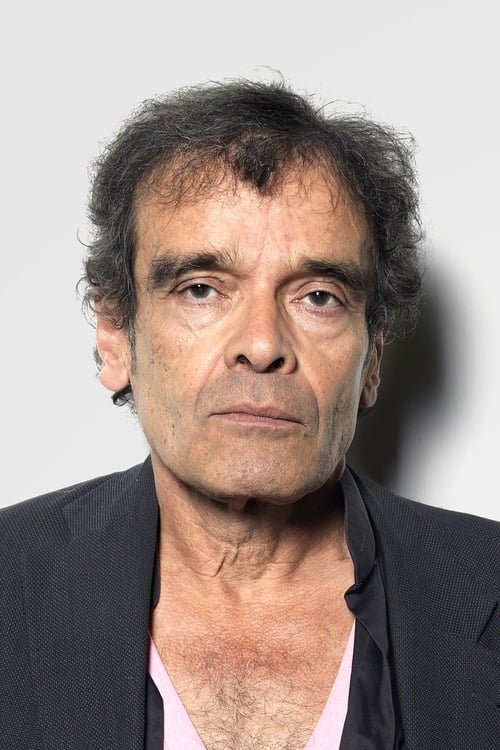
Director
A few years ago, German artists Antje Ehmann and Harun Farocki conducted workshops on the subject of work in 15 cities around the world. The result was the creation of 400 short films depicting various faces of work in the modern world. Now Antje Ehmann and architect Luis Feduchi have returned to the project, this time with filmmakers from Warsaw and Berlin. Will the films made be able to show how the pandemic influenced work and professional reality? Can all the changes occurring be captured in the form of an image? Will the movies themselves change? The German title of the project "Eine Einstellung zur Arbeit" has a double meaning: it means working in one film take and at the same time an attitude towards work.

(archive material)
At the end of the 1960s the post-war generation began to revolt against their parents. This was a generation disillusioned by anti-communist capitalism and a state apparatus in which they believed they saw fascist tendencies. This generation included journalist Ulrike Meinhof, lawyer Horst Mahler, filmmaker Holger Meins as well as students Gudrun Ensslin and Andreas Baader.

Dramaturgy
Friendship and jealousy among teenage girls.
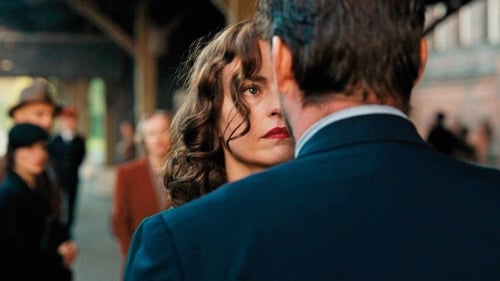
Co-Writer
Nelly Lenz é uma sobrevivente de um campo de concentração que ficou seriamente desfigurada. Lene Winter, que trabalha para uma agência judaica, leva-a para Berlim. Após a cirurgia de reconstrução, Nelly inicia a procura do seu marido Johnny. Quando finalmente o encontra, este não a reconhece. Ainda assim ele aborda-a com uma proposta: uma vez que ela se parece com a sua mulher, que ele acredita estar morta, pede-lhe que esta o ajude a reclamar a considerável fortuna que ela deixou. Nelly concorda, e torna-se a sua própria doppelgänger — ela precisa de saber se Johnny alguma vez a amou, ou se a traiu.

Harun Farocki
A short film made by D. N. Rodowick about the director Harun Farocki drinking a glass of wine in summer, 2011 in Berlin.

Director
Cinema’s onscreen worlds have always borne an indexical bond to the real. What happens when computer-generated video game images usurp film as the predominant medium of visual world-making? How does one’s relation to onscreen heroes shift when we no longer identify with real bodies? Harun Farocki’s four-part Parallel I–IV (2012–14) takes up these questions, tracing how, in just over 30 years, video games have developed from two-dimensional schematics to photorealistic environments.

Director
“The GSW Highrise in the Kreuzberg area of Berlin made the architects Sauerbruch and Hutton well known. The concave slab highrise of 18 floors has hundreds of windows, each with a blind colored slightly different from the next, producing a monumental composition that changes daily or even within the hour as the users of the building raise or lower them, partially or completely, as shade from the sunlight. The structures of these two architects appeal to me. They are bent on ecological efficiency, and they are lavish with their ideas. They are playful without being arbitrary. They are bound to the formal language of modernity without being dogmatic.”—Harun Farocki

Editor
A New Product is a corporate documentary, or, that is, a document of corporate qualities; specifically about what seems to be a small company whose purpose is to consult and design working spaces for larger corporations, exemplified by Vodafone and Unilever.

Writer
A New Product is a corporate documentary, or, that is, a document of corporate qualities; specifically about what seems to be a small company whose purpose is to consult and design working spaces for larger corporations, exemplified by Vodafone and Unilever.

Director
A New Product is a corporate documentary, or, that is, a document of corporate qualities; specifically about what seems to be a small company whose purpose is to consult and design working spaces for larger corporations, exemplified by Vodafone and Unilever.
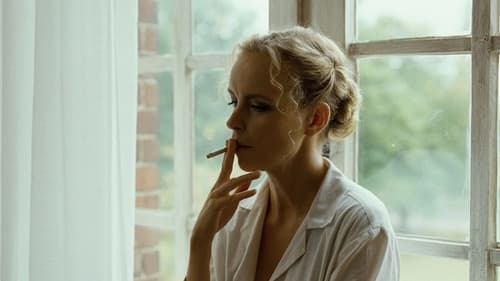
Writer
Verão de 1980. Barbara é uma pediatra que se viu transferida de Berlim para um hospital de uma cidade remota e isolada da Alemanha Oriental. A nova colocação surgiu depois de se ter candidatado a um visa para emigrar para o lado Ocidental do país. É lá que se encontra o seu namorado que prepara a fuga de Barbara enquanto a médica aguarda pacientemente pelo dia da sua libertação. O novo apartamento, os vizinhos, o Verão e o campo não significam nada para ela. No trabalho, Barbara é atenciosa, mas distante, seguindo as indicações do responsável do Hospital, André. Mas o médico confunde-a: deposita confiança nas suas capacidades profissionais, é carinhoso e o seu sorriso revelam um homem apaixonado. Ou será este médico um espia contratado para seguir os seus passos e revelá-los ao governo?

Director
The work examines the painting Depiction of the Cerro Rico and the Imperial City of Potosí (Oil on canvas, 262 x 181 cm) by Gaspar Miguel des Berrío, 1758, in the Museo Colonial Charcas de la Universidad San Francisco Xavier, Sucre / Bolivia.

Director
Harun Farocki: Serious Games I–IV (2009–10) explores the use of virtual reality and gaming technology in U.S. military recruitment, training and after-action therapy, revealing fundamental links between technology and violence in a time of war. Young recruits engage in simulated combat training, which barely differs from video games produced as entertainment. Footage is included from a workshop demonstrating the use of computer re-enactments in the psychological care of veterans suffering from post-traumatic stress disorder. As a large-scale installation, Serious Games critically focuses on the role of audiovisual culture in the spectacle of war.

Still Photographer
In Comparison revisits issues explored in the director's 2007 two channel installation Comparison Via a Third. Spanning continents and cultures, the film focuses on the brick in its many contexts, from the collective efforts of a community building a clinic in Burkina Faso, through semi industrialized moldings in India, to industrial production lines in Germany, France, Austria and Switzerland. Through its notable structure and its captivating rhythms, In Comparison presents various methods of labor production, allowing for an assessment that changes with every layer and goes well beyond a simple binary divide.

Producer
In Comparison revisits issues explored in the director's 2007 two channel installation Comparison Via a Third. Spanning continents and cultures, the film focuses on the brick in its many contexts, from the collective efforts of a community building a clinic in Burkina Faso, through semi industrialized moldings in India, to industrial production lines in Germany, France, Austria and Switzerland. Through its notable structure and its captivating rhythms, In Comparison presents various methods of labor production, allowing for an assessment that changes with every layer and goes well beyond a simple binary divide.

Writer
In Comparison revisits issues explored in the director's 2007 two channel installation Comparison Via a Third. Spanning continents and cultures, the film focuses on the brick in its many contexts, from the collective efforts of a community building a clinic in Burkina Faso, through semi industrialized moldings in India, to industrial production lines in Germany, France, Austria and Switzerland. Through its notable structure and its captivating rhythms, In Comparison presents various methods of labor production, allowing for an assessment that changes with every layer and goes well beyond a simple binary divide.

Director
In Comparison revisits issues explored in the director's 2007 two channel installation Comparison Via a Third. Spanning continents and cultures, the film focuses on the brick in its many contexts, from the collective efforts of a community building a clinic in Burkina Faso, through semi industrialized moldings in India, to industrial production lines in Germany, France, Austria and Switzerland. Through its notable structure and its captivating rhythms, In Comparison presents various methods of labor production, allowing for an assessment that changes with every layer and goes well beyond a simple binary divide.

Director
Feasting or Flying by Harun Farocki and Antje Ehmann alludes to the statement: "Some dissect a bird in order to eat it, others in order to discover how to fly". A six- channel deconstruction of the tragic male hero in cinema.

Director
Examines monuments scattered all over the world that have become goals for pilgrims and tourists and now serve to meet a whole range of different needs, from personal memory to spiritual enlightenment and religious sentiment. Farocki starts from the Vietnam Memorial in Washington ... thousands of people visit it every day, touch the letters and trace the names of family and friends in an attempt to establish a link between their own lives and the past. Other objects of pilgrimage – including the foot of the statue of the Apostle in St Peter’s and the Bocca della Verità in Rome as well as the devil’s footprint in the Frauenkirche in Munich and the monument in the Buchenwald concentration camp – meet the same need for understanding and purification. Stone is the material in which the collective memory of a life or an event in the past is immortalized and becomes an object of worship. At the same time, the memory of thousands of visitors is preserved in the traces of wear it displays.
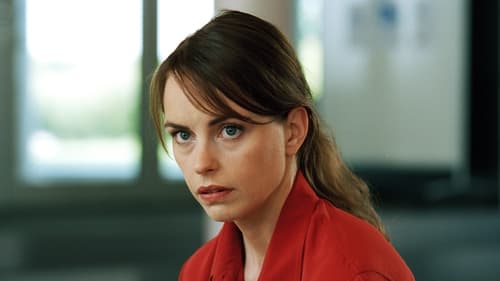
Script Editor
Yella decidiu deixar sua pequena cidade na Alemanha Oriental para começar uma nova vida no outro lado do rio Elba. Porém, ela é atormentada por estranhas vozes e sons: verdades do seu passado que voltam para assombrá-la.

Director
Vergleich über ein Drittes is about the concept of work, as reflected in the example of the manufacture and processing of bricks. Harun Farocki shows working procedures in traditional, newly industrializing, and highly industrialized societies. The seated woman worker was filmed in India. There follows footage of brick manufactoring in Mumbai, Nimbut, and Pune in single and double projections, as well as images shot in industrialized Europe that jump back and forth or are projected side by side. After this initial presentation of increasingly automated manufacturing processes, the subsequent work steps in the various lacations and societies are related to one another in a series of different constellations.

Producer
Respite consists of silent black-and-white film shot at Westerbork, a Dutch refugee camp established in 1939 for Jews fleeing Germany. In 1942, after the occupation of Holland, its function was reversed by the Nazis and it became a 'transit camp.' In 1944, the camp commander commissioned a film, shot by a photographer, Rudolph Breslauer. “By exhuming the scattered fragments and traces of the phantom film (intertitle cards, ideas for the scenario, graphic elements), Harun Farocki inscribes the Dutch footage within the genre of the corporate film.

Writer
Respite consists of silent black-and-white film shot at Westerbork, a Dutch refugee camp established in 1939 for Jews fleeing Germany. In 1942, after the occupation of Holland, its function was reversed by the Nazis and it became a 'transit camp.' In 1944, the camp commander commissioned a film, shot by a photographer, Rudolph Breslauer. “By exhuming the scattered fragments and traces of the phantom film (intertitle cards, ideas for the scenario, graphic elements), Harun Farocki inscribes the Dutch footage within the genre of the corporate film.

Director
Respite consists of silent black-and-white film shot at Westerbork, a Dutch refugee camp established in 1939 for Jews fleeing Germany. In 1942, after the occupation of Holland, its function was reversed by the Nazis and it became a 'transit camp.' In 1944, the camp commander commissioned a film, shot by a photographer, Rudolph Breslauer. “By exhuming the scattered fragments and traces of the phantom film (intertitle cards, ideas for the scenario, graphic elements), Harun Farocki inscribes the Dutch footage within the genre of the corporate film.

Director
Harun Farocki’s work Deep Play is made up of various perspectives on the final of the 2006 World Cup.

Editor
Previously focused on Asian directors, “Jeonju Digital Project 2007” takes a look at Europe. The Portuguese filmmaker Pedro Costa, the German filmmaker Harun Farocki, and the French filmmaker Eugène Green participated in this project.

Story
Previously focused on Asian directors, “Jeonju Digital Project 2007” takes a look at Europe. The Portuguese filmmaker Pedro Costa, the German filmmaker Harun Farocki, and the French filmmaker Eugène Green participated in this project.

Director
Previously focused on Asian directors, “Jeonju Digital Project 2007” takes a look at Europe. The Portuguese filmmaker Pedro Costa, the German filmmaker Harun Farocki, and the French filmmaker Eugène Green participated in this project.

Producer
Previously focused on Asian directors, “Jeonju Digital Project 2007” takes a look at Europe. The Portuguese filmmaker Pedro Costa, the German filmmaker Harun Farocki, and the French filmmaker Eugène Green participated in this project.

Producer
Documentary about turkish expats returning to Turkey.

Director
In On Construction of Griffith' Films we picked a sequence from Griffith Intolerance (1916). It shows a dialogue between a man and a woman, filmed and edited as shot and counter shot. We reproduce the shot on two monitors to reveal its narrative character and also because analysis requires us to dissect something. The narrative form of shot / counter shot, which would later become the norm for depicting dialogue in film, remains novel here. A few years earlier Griffith had still used tracking shots to tell his stories. In The Lonedale Operator (1911), cuts were made only when the scene changed; a cut in the movie's story line. In Intolerance, cinematography had already achieved such a level of independence that it was the camera that constituted a room with it's detail. -Harun Farocki

Director
A soliloquy by Robert de Niro. The ever same image, the words in seven languages.
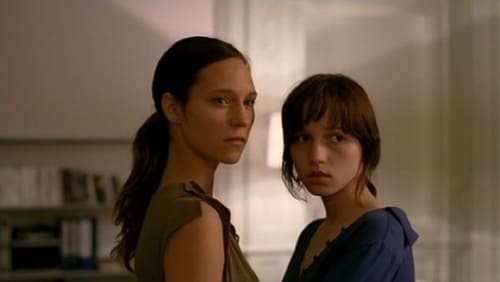
Dramaturgy
Nina, uma jovem orfã problemática, se apaixona por Toni, quando a conhece desamparada em um parque, e começam um relacionamento conturbado. Paralelamente, Francoise receba alta do hospital psiquiátrico, e ao se deparar com Nina, acredita que ela seja Marie, sua filha sequestrada aos três anos de idade.

Screenplay
Nina, uma jovem orfã problemática, se apaixona por Toni, quando a conhece desamparada em um parque, e começam um relacionamento conturbado. Paralelamente, Francoise receba alta do hospital psiquiátrico, e ao se deparar com Nina, acredita que ela seja Marie, sua filha sequestrada aos três anos de idade.

Director
"If there is a relationship between production and destruction, between the development of productive and destructive forces, then the atom bomb is the ultimate weapon of the post-industrial age. Greatest tonnage, highest mortality, maximum devastation. But what comes next, what are the weapons of the post-industrial age?" - Harun Farocki

Director
The diagrams used to help represent consumer shopping baskets, the pensions deficit or migration are anachronistic, Farocki posits; Whether pictographs or simple bar or pie charts, their abstractions all display an impotence of information. "Examples of diagrams gleaned from newspapers, school text books and official publications are [...] the history of migration in the Federal Republic of Germany. What we are seeking, therefore, is a conceptual critique of the ways in which migration is presented, pursuing the icons and symbols back to their origins and examining them with regard to content they themselves are unaware of." -HF

Screenplay
What venture capital or VC for short actually means is explained in the film itself. Banks only lend money against collateral. Those who have none have to turn to VC companies and pay interest of 40%.

Director
What venture capital or VC for short actually means is explained in the film itself. Banks only lend money against collateral. Those who have none have to turn to VC companies and pay interest of 40%.

Director
The city today is as rationalised and regulated as a production process. The images which today determine the day of the city are operative images, control images. Representations of traffic regulation, by car, train or metro, representations determining the height at which mobile phone network transmitters are fixed, and where the holes in the networks are. Images from thermo-cameras to discover heat loss from buildings. And digital models of the city, portrayed with fewer shapes of buildings or roofs than were used in the 19th century when planned industrial cities arose, amongst them the Lille agglomeration. Despite their boulevards, promenades, market places, arcades and churches, these cities are already machines for living and working. I too want to "remake" the city films, but with different images. Limited time and means themselves demand concentration on just a few, archetypal chapters. Fragments, or preliminary studies.

Screenplay
Images from the maximum-security prison in Corcoran, California. A surveillance camera shows a pie-shaped segment of the concrete yard where the prisoners, dressed in shorts and mostly shirtless, are allowed to spend half an hour a day. When one convict attacks another, those not involved lay flat on the ground, arms over their heads. They know that when a fight breaks out, the guard calls out a warning and then fires rubber bullets. If the fight continues, the guard shoots real bullets. The pictures are silent, the trail of gun smoke drifts across the picture. The camera and the gun are right next to each other.

Director
Images from the maximum-security prison in Corcoran, California. A surveillance camera shows a pie-shaped segment of the concrete yard where the prisoners, dressed in shorts and mostly shirtless, are allowed to spend half an hour a day. When one convict attacks another, those not involved lay flat on the ground, arms over their heads. They know that when a fight breaks out, the guard calls out a warning and then fires rubber bullets. If the fight continues, the guard shoots real bullets. The pictures are silent, the trail of gun smoke drifts across the picture. The camera and the gun are right next to each other.

Screenplay
In 1991, when images of the Gulf War flooded the international media, it was virtually impossible to distinguish between real pictures and those generated on computer. This loss of bearings was to change forever our way of deciphering what we see. The image is no longer used only as testimony, but also as an indispensable link in a process of production and destruction. This is the central premise of "War at a Distance", which continues the deconstruction of claims to visual objectivity Harun Farocki developed in his earlier work. With the help of archival and original material, Farocki sets out in effect to define the relationship between military strategy and industrial production and sheds light on how the technology of war finds applications in everyday life.

Director
In 1991, when images of the Gulf War flooded the international media, it was virtually impossible to distinguish between real pictures and those generated on computer. This loss of bearings was to change forever our way of deciphering what we see. The image is no longer used only as testimony, but also as an indispensable link in a process of production and destruction. This is the central premise of "War at a Distance", which continues the deconstruction of claims to visual objectivity Harun Farocki developed in his earlier work. With the help of archival and original material, Farocki sets out in effect to define the relationship between military strategy and industrial production and sheds light on how the technology of war finds applications in everyday life.

Screenplay
The third part of the Eye/Machine cycle structures the material around the concept of the operational image. These are images which do not portray a process but are themselves part of a process. As early as the Eighties, cruise missiles used a stored image of a real landscape then took an actual image during flight, the software compared the two images. A comparison between idea and reality, a confrontation between pure war and the impurity of the actual. This confrontation is also a montage and montage is always about similarity and difference. Many operational images show coloured guidance lines, intended to portray the work of recognition. The lines tell us emphatically what is all important in these images, and just as emphatically what is of no importance at all. Superfluous reality is denied – a constant denial provoking opposition.

Director
The third part of the Eye/Machine cycle structures the material around the concept of the operational image. These are images which do not portray a process but are themselves part of a process. As early as the Eighties, cruise missiles used a stored image of a real landscape then took an actual image during flight, the software compared the two images. A comparison between idea and reality, a confrontation between pure war and the impurity of the actual. This confrontation is also a montage and montage is always about similarity and difference. Many operational images show coloured guidance lines, intended to portray the work of recognition. The lines tell us emphatically what is all important in these images, and just as emphatically what is of no importance at all. Superfluous reality is denied – a constant denial provoking opposition.

Twenty-five years after the death of Holger Meins, filmmaker and former student friend of the deceased, Gerd Conradt takes an in-depth look at the helmsman of the Baader-Meinhof gang. Who was Holger Meins? What led him into the underground? What circumstances resulted in his death, a death which made him the declared symbol of the radical opposition in Germany? What remains of his legacy?

Screenplay
In Eye/Machine II, Farocki has brought together visual material from both military and civilian sectors, showing machines operating intelligently and what it is they see when working on the basis of image processing programs. The traditional man-machine distinction becomes reduced to "eye/machine"" where cameras are implanted into the machines as eyes. As a result of the Gulf War, the technology of warfare came to provide an innovative impulse, which boosted the development of civilian production. Farocki shows us computer simulated images looking like something out of science-fiction films: rockets steer towards islands set in a shining sea; apartment blocks are blown up; fighter aircraft fire at one another with rockets and defend themselves with virtual flares.

Director
In Eye/Machine II, Farocki has brought together visual material from both military and civilian sectors, showing machines operating intelligently and what it is they see when working on the basis of image processing programs. The traditional man-machine distinction becomes reduced to "eye/machine"" where cameras are implanted into the machines as eyes. As a result of the Gulf War, the technology of warfare came to provide an innovative impulse, which boosted the development of civilian production. Farocki shows us computer simulated images looking like something out of science-fiction films: rockets steer towards islands set in a shining sea; apartment blocks are blown up; fighter aircraft fire at one another with rockets and defend themselves with virtual flares.

Writer
A look at how mall producers design malls in order to maximise traffic and sales.

Director
A look at how mall producers design malls in order to maximise traffic and sales.
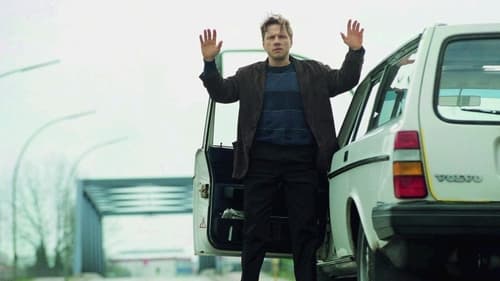
Writer
Um casal alemão com um passado criminoso vive em fuga em Portugal com a filha de 15 anos. Quando o seu dinheiro é roubado, eles devem voltar secretamente para o seu país de origem. Durante a viagem, o desenvolvimento adolescente da filha Jeanne coincide com a desintegração violenta da sua família.

Screenplay
The work centers on the images of the Gulf War which caused worldwide sensation in 1991. In the shots taken from projectiles homing in on their targets, bomb and reporter were identical, according to a theory put forward by the philosopher Klaus Theweleit. At the same time it was impossible to distinguish between the photographed and the (computer) simulated images. The loss of the 'genuine picture' means the eye no longer has a role as historical witness. It has been said that what was brought into play in the Gulf War was not new weaponry but rather a new policy on images. In this way the basis for electronic warfare was created...

Director
The work centers on the images of the Gulf War which caused worldwide sensation in 1991. In the shots taken from projectiles homing in on their targets, bomb and reporter were identical, according to a theory put forward by the philosopher Klaus Theweleit. At the same time it was impossible to distinguish between the photographed and the (computer) simulated images. The loss of the 'genuine picture' means the eye no longer has a role as historical witness. It has been said that what was brought into play in the Gulf War was not new weaponry but rather a new policy on images. In this way the basis for electronic warfare was created...

Screenplay
A film composed of images from prisons. Quotes from fiction films and documentaries as well as footage from surveillance cameras. A look at the new control technologies, at personal identification devices, electronic ankle bracelets, electronic tracking devices.

Director
A film composed of images from prisons. Quotes from fiction films and documentaries as well as footage from surveillance cameras. A look at the new control technologies, at personal identification devices, electronic ankle bracelets, electronic tracking devices.

Writer
A remake, in English of the German film Nicht löschbares Feuer (1969).

Screenplay
The new production plants for the daily chat- and game shows are on the periphery; in the case of Unterföhring near Munich on the extension to the Bahnhofstraße named Medienallee (Media Avenue). This industry is so new, that it cannot as yet reliably predict costs and extra costs, profits and extra profits; its most important raw material is the ordinary, everyday person. They are cheap and they want to make an appearance, but are they worth showing?

Director
The new production plants for the daily chat- and game shows are on the periphery; in the case of Unterföhring near Munich on the extension to the Bahnhofstraße named Medienallee (Media Avenue). This industry is so new, that it cannot as yet reliably predict costs and extra costs, profits and extra profits; its most important raw material is the ordinary, everyday person. They are cheap and they want to make an appearance, but are they worth showing?

Writer
Historically, the cinema close-up was initially employed to convey emotions through facial expressions. But soon filmmakers also began focusing their attention on hands. Using film extracts, Farocki explores this visual language, its symbolism, Freudian slips, automatisms and its music. Often, hands betray an emotion which the face tries to dissimulate. They can also function as a conduit (exchanging money) or witness to a form of competence (work).

Director
Historically, the cinema close-up was initially employed to convey emotions through facial expressions. But soon filmmakers also began focusing their attention on hands. Using film extracts, Farocki explores this visual language, its symbolism, Freudian slips, automatisms and its music. Often, hands betray an emotion which the face tries to dissimulate. They can also function as a conduit (exchanging money) or witness to a form of competence (work).

Editor
According to Harun Farocki, today's photographers working in advertising are, in a way, continuing the tradition of 17th century Flemish painters in that they depict objects from everyday life - the "still life". The filmmaker illustrates this intriguing hypothesis with three documentary sequences which show the photographers at work creating a contemporary "still life": a cheese-board, beer glasses and an expensive watch.

Writer
According to Harun Farocki, today's photographers working in advertising are, in a way, continuing the tradition of 17th century Flemish painters in that they depict objects from everyday life - the "still life". The filmmaker illustrates this intriguing hypothesis with three documentary sequences which show the photographers at work creating a contemporary "still life": a cheese-board, beer glasses and an expensive watch.

Director
According to Harun Farocki, today's photographers working in advertising are, in a way, continuing the tradition of 17th century Flemish painters in that they depict objects from everyday life - the "still life". The filmmaker illustrates this intriguing hypothesis with three documentary sequences which show the photographers at work creating a contemporary "still life": a cheese-board, beer glasses and an expensive watch.

Director
In the summer of 1996, Farocki filmed application training courses in which one learns how to apply for a job. School drop-outs, university graduates, people who have been re-trained, the long-term unemployed, recovered drug addicts, and mid-level managers - all of them are supposed to learn how to market and sell themselves, a skill to which the term "self management" is applied.

Screenplay
Tom is constantly running into problems and gets beaten up time and time again.

Director
With Der Auftritt Farocki once again takes us into the world of advertising, following Image und Umsatz oder wie kann man einen Schuh darstellen? (1989). An advertising agency has to pitch a marketing concept to an optician's consortium, represented by the manager who is the first to see the campaign. The logo submitted, ‚Eyedentity', is examined from every angle: it must simultaneously express both the company's dynamism and its reliability! A fascinating, dispassionate glimpse behind closed doors, where every detail is dramatised to win that lucrative contract.

Harun Farocki was commissioned by the Lille Museum of Modern Art to produce a video 'about his work'. His creation was an installation for two screens that was presented within the scope for the 1995 exhibition The World of Photography. The work Schnittstelle developed out of that installation. Reflecting on Farocki's own documentary work, it examines the question of what it means to work with existing images rather than producing one's own, new images. The title plays on the double meaning of 'Schnitt', referring both to Farocki's workplace, the editing table, as well as the 'human-machine interface', where a person operates a computer using a keyboard and a mouse.

Director
Harun Farocki was commissioned by the Lille Museum of Modern Art to produce a video 'about his work'. His creation was an installation for two screens that was presented within the scope for the 1995 exhibition The World of Photography. The work Schnittstelle developed out of that installation. Reflecting on Farocki's own documentary work, it examines the question of what it means to work with existing images rather than producing one's own, new images. The title plays on the double meaning of 'Schnitt', referring both to Farocki's workplace, the editing table, as well as the 'human-machine interface', where a person operates a computer using a keyboard and a mouse.

Producer
Using one of the Lumière Brothers' first films of workers leaving the Factory as his starting point, Farocki provides an insight to changes in industrial production, workers' strikes and motion pictures-- via images of workers leaving factories throughout the years.

Narrador
Using one of the Lumière Brothers' first films of workers leaving the Factory as his starting point, Farocki provides an insight to changes in industrial production, workers' strikes and motion pictures-- via images of workers leaving factories throughout the years.

Writer
Using one of the Lumière Brothers' first films of workers leaving the Factory as his starting point, Farocki provides an insight to changes in industrial production, workers' strikes and motion pictures-- via images of workers leaving factories throughout the years.

Director
Using one of the Lumière Brothers' first films of workers leaving the Factory as his starting point, Farocki provides an insight to changes in industrial production, workers' strikes and motion pictures-- via images of workers leaving factories throughout the years.

Director
1989, the fall of the Berlin wall. Television crews trying, for days on end, to get an emblematic image which would crystallise the event: to no avail. Five years later, Farocki delivers a montage film of this footage, trying to define this ‚absent image'. "Today, 5 years later, this material shows the extent to which the collective conscience was affected by the event, as well as all the efforts made to repress the trauma" declares the filmmaker.

Director
Farocki revisits the executive trainer from his earlier "Die Schulung" (Indoctrination, 1987), this time holding a seminar with ex-GDR employees of a West German construction company.

Director
The film shows one day from waking up in the morning all the way to waking up again the next morning. The everyday situations that many commercials are made of, the little dramas that they create and solve through the product or service they sell, are stitched together into one day. This is a film about the everyday in (German, or Western-European) society because the commercials are part of the everyday of most people (everyone who watches television) and they depict an ideal image of society. The film abundantly uses repetition as an editing technique, in visual ways as described above, but also because commercials can be read in different ways. For instance, Brat baking foil shows up at the evening dinner sequence, when an ovendish is put on the table, and again later on in the sequence about going out to a classic concert, because the clip has classic music.

Film by Wolfgang Schmidt.
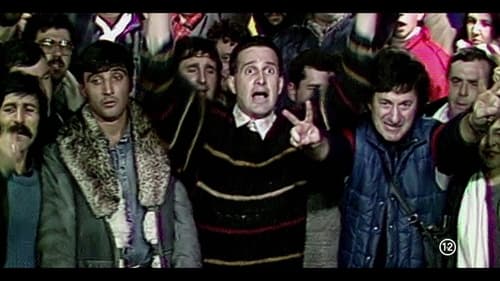
Producer
Videograms of a Revolution is a 1992 documentary film compiled by Harun Farocki and Andrei Ujică from over 125 hours of amateur footage, news footage, and excerpts from the Bucharest TV studio overtaken by demonstrators as part of the December 1989 Romanian Revolution.

Writer
Videograms of a Revolution is a 1992 documentary film compiled by Harun Farocki and Andrei Ujică from over 125 hours of amateur footage, news footage, and excerpts from the Bucharest TV studio overtaken by demonstrators as part of the December 1989 Romanian Revolution.

Director
Videograms of a Revolution is a 1992 documentary film compiled by Harun Farocki and Andrei Ujică from over 125 hours of amateur footage, news footage, and excerpts from the Bucharest TV studio overtaken by demonstrators as part of the December 1989 Romanian Revolution.

Script Editor
Vera e Heike são duas amigas que sonham com um estilo de vida deslumbrante, mas não têm dinheiro para isso. Vera decide começar a roubar de homens com quem bebe nos bares. Quando Heike assume o controle, seu método se revela menos eficaz, o que a faz ser pega em flagrante.

Director
How a look can be turned toward its goal by grasping and measuring its covetousness is shown in an exemplary fashion in What's Up? in a motif depicting a postcard of a painting by Titian in an eye-mark recorder.

Director
Short documentary vignettes and interviews revolving around cinephile life in Paris.

Director
A series of 32 short scenes, uniformly set in West German instructional and training classes, that show various tasks among the citizenry being done solely as the result of exhaustive preparation - everything from women preparing to give birth, to strippers stripping, to policemen making arrests. Farocki uses the material to savagely dissect the West German mode of life. ~ Nathan Southern, Rovi

Director
An ad agency creates a new campaign for a shoe company.

Editor
Farocki’s intriguing and troubling film explores the processes of visual perception and how they affect our understanding of history and society. In a work reminiscent of the writings of Paul Virilio and Michel Foucault, Farocki examines a range of phenomena including aerial reconnaissance photos of the Auschwitz concentration camp.

Writer
Farocki’s intriguing and troubling film explores the processes of visual perception and how they affect our understanding of history and society. In a work reminiscent of the writings of Paul Virilio and Michel Foucault, Farocki examines a range of phenomena including aerial reconnaissance photos of the Auschwitz concentration camp.

Director
Farocki’s intriguing and troubling film explores the processes of visual perception and how they affect our understanding of history and society. In a work reminiscent of the writings of Paul Virilio and Michel Foucault, Farocki examines a range of phenomena including aerial reconnaissance photos of the Auschwitz concentration camp.

Writer
Portrait of Georg Glaser, who is a writer in the mornings and a blacksmith in the afternoons.

Director
Portrait of Georg Glaser, who is a writer in the mornings and a blacksmith in the afternoons.

Portrait of Georg Glaser, who is a writer in the mornings and a blacksmith in the afternoons.

Director
This film is about a five-day seminar designed to teach executives how to "sell themselves" better. This course, designed for managers, teaches the basic rules of dialectics and rhetoric and provides training in body language, gesture and facial expression. The aim of selling something has always been a principle of mercantile action. Yet it was only through the marriage of psychology and modern capitalism that the idea of selling oneself was perfected.

Writer
In 'As You See', Farocki searches for those instances and facts in the history of technology that have been overlooked or ignored, also exploring the ambivalent relationship between technologies developed for civil use and those designed for military purposes. Thus the film for instance describes how in the 1970s workers at the British arms factory Lucas Aerospace attempted to develop socially useful products to replace the company's military output. Rather than following a linear argument, this essay-film juxtaposes disparate images and weaves them into a mosaic-like structure which makes it possible for the viewers to make their own connections between the different images as well as between the images and the commentary.

Director
In 'As You See', Farocki searches for those instances and facts in the history of technology that have been overlooked or ignored, also exploring the ambivalent relationship between technologies developed for civil use and those designed for military purposes. Thus the film for instance describes how in the 1970s workers at the British arms factory Lucas Aerospace attempted to develop socially useful products to replace the company's military output. Rather than following a linear argument, this essay-film juxtaposes disparate images and weaves them into a mosaic-like structure which makes it possible for the viewers to make their own connections between the different images as well as between the images and the commentary.

Writer
Harun Farocki sits down with Vilém Flusser to discuss the front page of the German tabloid newspaper Bild Zeitung.

Director
Harun Farocki sits down with Vilém Flusser to discuss the front page of the German tabloid newspaper Bild Zeitung.

Harun Farocki sits down with Vilém Flusser to discuss the front page of the German tabloid newspaper Bild Zeitung.

Director
A review of film books old and new.

Director

Director
A “film-noir” on double identity and role reversal. A man is looking for a woman to love. He finds her in a seedy bar and persuades her to marry him. The day she decides to flee… he kills her. To ward off suspicion, he moves in with the sister of the deceased.

Director
Peter Lorre achieved international fame for his performance in the myth-making role in M. This character has held a peculiar fascination for generations of cinephiles. However, at the time, whilst such success meant recognition, it also weighed on the Hungarian actor as a constrictive burden. Using photographs and film extracts, Das doppelte Gesicht reconstructs the ups and downs of Lorre's career, taking into consideration the economic imperatives and workings of the film industry at the time. (Arnold Hohmann, 1984)
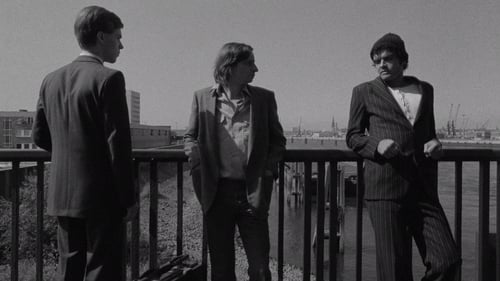
Delamarche
A young man, recently arrived in New York from Europe, becomes swept up in a series of events that are beyond his knowledge or control.

This film is at once a self-portrait and an homage to Jean-Marie Straub, Farocki's role model and former teacher at the Film Academy.

Director
This film is at once a self-portrait and an homage to Jean-Marie Straub, Farocki's role model and former teacher at the Film Academy.

Director
"Four days spent in a studio working on a centerfold photo for Playboy magazine provided the subject matter for my film. The magazine itself deals with culture, cars, a certain lifestyle. Maybe all those trappings are only there to cover up the naked woman. Maybe it’s like with a paper-doll. The naked woman in the middle is a sun around which a system revolves: of culture, of business, of living!" (Harun Farocki, Zelluloid, no. 27, Fall 1988)

Director
In "Before your Eyes - Vietnam", a voice-over talks about war as basically an experiment, not unlike film itself.

Self

Writer
Interview film with Peter Weiss

Director
Interview film with Peter Weiss

Director
For years I've been looking for the means to capture everyday life just as it is perceived through a glance from the street. Twenty years ago, you could see young people standing with their bicycles on street corners, in fact, if the bicycles where there, you could be sure to find the young people standing there talking. I would like to document these kinds of events. On this occasion, I was presented with the opportunity to do so. For two and a half weeks, I walked around different parts of the city with my camera and collected images for the film. (Harun Farocki, 1979)

Director
Farocki frequently chooses a single news photo as his pretext. In his film he explains convincingly that 'learning from images' is not so much a question of having power over the image or a consistent subject-position towards the image, which would allow the filmmaker access to complete knowledge. Instead he insists on pursuing photography's separation of reference and discourse, by proving this to be a separation of the subject as well as a separation within the subject itself. [...] - Thomas Elsaesser
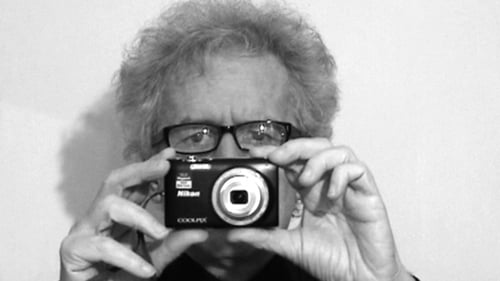
N°1068
Cinématon is a 156-hour long experimental film by French director Gérard Courant. It was the longest film ever released until 2011. Composed over 36 years from 1978 until 2006, it consists of a series of over 2,821 silent vignettes (cinématons), each 3 minutes and 25 seconds long, of various celebrities, artists, journalists and friends of the director, each doing whatever they want for the allotted time. Subjects of the film include directors Barbet Schroeder, Nagisa Oshima, Volker Schlöndorff, Ken Loach, Benjamin Cuq, Youssef Chahine, Wim Wenders, Joseph Losey, Jean-Luc Godard, Samuel Fuller and Terry Gilliam, chess grandmaster Joël Lautier, and actors Roberto Benigni, Stéphane Audran, Julie Delpy and Lesley Chatterley. Gilliam is featured eating a 100-franc note, while Fuller smokes a cigar. Courant's favourite subject was a 7-month-old baby. The film was screened in its then-entirety in Avignon in November 2009 and was screened in Redondo Beach, CA on April 9, 2010.

Writer
A film about the time of the blast furnances - 1917 - 1933 - about the development of an industry, about a perfect machinery which had to run itself to the point of its own destruction.

A film about the time of the blast furnances - 1917 - 1933 - about the development of an industry, about a perfect machinery which had to run itself to the point of its own destruction.

Director
A film about the time of the blast furnances - 1917 - 1933 - about the development of an industry, about a perfect machinery which had to run itself to the point of its own destruction.

Film director
Essay film about Franz Kafka's novel "Amerika".

Director
Painter Sarah Schumann at work.

Director
"As if pictures could think! Einschlafgeschichten doesn't really speak of bridges or railroads but rather of two girls filling the space between daytime and dreamtime with a poetic game, an endless game, a game with no end. A game which can fade out without becoming fragmentary. "Are you asleep?", one of them asks at the end of a clip – and the final shot is of the two, asleep; the game is over. The girls are played by Lara and Anna, Farocki's daughters." - Hans J. Wulff

Director
"As if pictures could think! Einschlafgeschichten doesn't really speak of bridges or railroads but rather of two girls filling the space between daytime and dreamtime with a poetic game, an endless game, a game with no end. A game which can fade out without becoming fragmentary. "Are you asleep?", one of them asks at the end of a clip – and the final shot is of the two, asleep; the game is over. The girls are played by Lara and Anna, Farocki's daughters." - Hans J. Wulff

Director
"As if pictures could think! Einschlafgeschichten doesn't really speak of bridges or railroads but rather of two girls filling the space between daytime and dreamtime with a poetic game, an endless game, a game with no end. A game which can fade out without becoming fragmentary. "Are you asleep?", one of them asks at the end of a clip – and the final shot is of the two, asleep; the game is over. The girls are played by Lara and Anna, Farocki's daughters."

Director
"As if pictures could think! Einschlafgeschichten doesn't really speak of bridges or railroads but rather of two girls filling the space between daytime and dreamtime with a poetic game, an endless game, a game with no end. A game which can fade out without becoming fragmentary. "Are you asleep?", one of them asks at the end of a clip – and the final shot is of the two, asleep; the game is over. The girls are played by Lara and Anna, Farocki's daughters." - Hans J. Wulff

Interdisciplinary studies put into practice is a plane on which HaF's interests and mine coincide. Ideas of fictional research projects in films emerge very early on, or of film as research device, allowing people from different disciplines to come together and discover something, to pursue a line of thought, or just be adventurous. These ideas correspond to a tendency we both have of accumulating knowledge from different sciences, for example so as to bring exact sciences like medicine together with subjects which aren't directly aimed at application, such as religious studies or anthropology.

Director
Interdisciplinary studies put into practice is a plane on which HaF's interests and mine coincide. Ideas of fictional research projects in films emerge very early on, or of film as research device, allowing people from different disciplines to come together and discover something, to pursue a line of thought, or just be adventurous. These ideas correspond to a tendency we both have of accumulating knowledge from different sciences, for example so as to bring exact sciences like medicine together with subjects which aren't directly aimed at application, such as religious studies or anthropology.

Screenplay

Writer
Song of Ceylon was commissioned for the short-lived German TV-series Telekritik and broadcasted in 1975. In Telekritik documentary approaches were analysed and made available for a critique of contemporary TV, its aesthetics and modes of production. Other authors for the series include Hartmut Bitomsky, Rainer Gansera and Klaus Wildenhahn.In the 30-minute movie, Farocki shows and comments on excerpts from the film Song of Ceylon by Basil Wright (and a short segment of Eisenstein's Mexico-fragments). Farocki's voice-over describes part of the movie, focussing on details and montage. He also uses didactic and descriptive drawings and intertitles to confront the classic documentary and its stylistic approaches with contemporary TV.

(voice)
Song of Ceylon was commissioned for the short-lived German TV-series Telekritik and broadcasted in 1975. In Telekritik documentary approaches were analysed and made available for a critique of contemporary TV, its aesthetics and modes of production. Other authors for the series include Hartmut Bitomsky, Rainer Gansera and Klaus Wildenhahn.In the 30-minute movie, Farocki shows and comments on excerpts from the film Song of Ceylon by Basil Wright (and a short segment of Eisenstein's Mexico-fragments). Farocki's voice-over describes part of the movie, focussing on details and montage. He also uses didactic and descriptive drawings and intertitles to confront the classic documentary and its stylistic approaches with contemporary TV.

Director
Song of Ceylon was commissioned for the short-lived German TV-series Telekritik and broadcasted in 1975. In Telekritik documentary approaches were analysed and made available for a critique of contemporary TV, its aesthetics and modes of production. Other authors for the series include Hartmut Bitomsky, Rainer Gansera and Klaus Wildenhahn.In the 30-minute movie, Farocki shows and comments on excerpts from the film Song of Ceylon by Basil Wright (and a short segment of Eisenstein's Mexico-fragments). Farocki's voice-over describes part of the movie, focussing on details and montage. He also uses didactic and descriptive drawings and intertitles to confront the classic documentary and its stylistic approaches with contemporary TV.

A West Berlin doctor, married with a two-year-old child, leaves her husband to go to Munich to work in the birth clinic of a hospital. Her husband doesn’t know that she’s pregnant with their second child. Will she have to choose between motherhood and her career?

Director
“The make-up artist Serge Lutens is shown covering a model’s face with powder then working it into her face over several minutes. The face becomes a canvas, primed for painting. Flesh is turned into something different, looking like marble. It seems as though life has to be frozen in order to achieve beauty.” –Harun Farocki

Director
Refreshingly, Farocki lays his cards on the table at the very beginning of the film, “I want to demonstrate that most feature films are of the sort that make people lose their interest and appetite for the real world”.

Writer

Director

Director
“Farocki’s ten-minute short film is composed of shots of an AFN DJ at work…and of a car ride, whereby the camera points out of the car (through the windscreen or the side windows) or it captures and tracks a passing car.” –Gero Günther
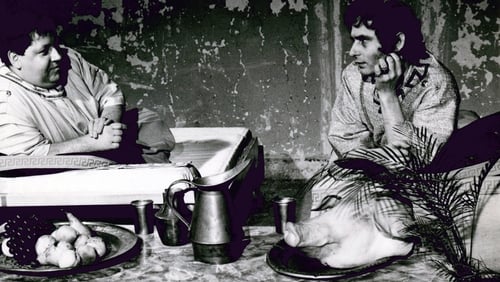
An educational film about an aspect of political economy. The concepts of use value, barter value and labor as a commodity are the subjects; they are intended to introduce the process of understanding the theory of value of work and the law of values, alienation and fetish.

Writer
An educational film about an aspect of political economy. The concepts of use value, barter value and labor as a commodity are the subjects; they are intended to introduce the process of understanding the theory of value of work and the law of values, alienation and fetish.

Director
An educational film about an aspect of political economy. The concepts of use value, barter value and labor as a commodity are the subjects; they are intended to introduce the process of understanding the theory of value of work and the law of values, alienation and fetish.

TV movie by Farocki and Bitomsky.

Director
TV movie by Farocki and Bitomsky.

Film by a student collective of the dffb.

Producer
An austere treatise on the military-industrial complex that produces napalm.

An austere treatise on the military-industrial complex that produces napalm.

Editor
An austere treatise on the military-industrial complex that produces napalm.

Screenplay
An austere treatise on the military-industrial complex that produces napalm.

Director
An austere treatise on the military-industrial complex that produces napalm.

Editor
According to Fritz J. Raddatz, Rosa Luxemburg cried when she read Marx's concept of value. I was just as disappointed by the Cine-Tracts made in May 1968 in Paris and shown shortly afterwards in Berlin.

Producer
According to Fritz J. Raddatz, Rosa Luxemburg cried when she read Marx's concept of value. I was just as disappointed by the Cine-Tracts made in May 1968 in Paris and shown shortly afterwards in Berlin.

Writer
According to Fritz J. Raddatz, Rosa Luxemburg cried when she read Marx's concept of value. I was just as disappointed by the Cine-Tracts made in May 1968 in Paris and shown shortly afterwards in Berlin.

Director
According to Fritz J. Raddatz, Rosa Luxemburg cried when she read Marx's concept of value. I was just as disappointed by the Cine-Tracts made in May 1968 in Paris and shown shortly afterwards in Berlin.

Producer

Writer

Director

Director
The film Wanderkino für Ingenieurstudenten was part of the extra-parliamentary opposition's (APO) so-called 'technology campaign' aimed at politicizing the students at the technical universities and schools of engineering.

Director
On Easter 1968 an assassination attempt on Rudi Dutschke was carried out. Shortly afterwards street battles resulted throughout West Germany. Farocki's short film Drei Schüsse auf Rudi is presumably lost.

Editor
Ihre Zeitungen is a political film rooted in the 1968 student campaign against the Springer press group, which controlled popular dailies such as the Berliner Zeitung and the Bild Zeitung. Claiming the latter were manipulating public opinion, the students laid siege to the publisher's offices. These events made a strong impression on the German collective conscience, and it's in this context that Farocki made this "agit-prop" film.

Ihre Zeitungen is a political film rooted in the 1968 student campaign against the Springer press group, which controlled popular dailies such as the Berliner Zeitung and the Bild Zeitung. Claiming the latter were manipulating public opinion, the students laid siege to the publisher's offices. These events made a strong impression on the German collective conscience, and it's in this context that Farocki made this "agit-prop" film.

Writer
Ihre Zeitungen is a political film rooted in the 1968 student campaign against the Springer press group, which controlled popular dailies such as the Berliner Zeitung and the Bild Zeitung. Claiming the latter were manipulating public opinion, the students laid siege to the publisher's offices. These events made a strong impression on the German collective conscience, and it's in this context that Farocki made this "agit-prop" film.

Director
Ihre Zeitungen is a political film rooted in the 1968 student campaign against the Springer press group, which controlled popular dailies such as the Berliner Zeitung and the Bild Zeitung. Claiming the latter were manipulating public opinion, the students laid siege to the publisher's offices. These events made a strong impression on the German collective conscience, and it's in this context that Farocki made this "agit-prop" film.

Editor
One of the many films drawing a connection between Christmas and war. It is unclear whether the longing for a white Christmas is being taken seriously, or whether it is intended as a denunciation. In either event, America's war in Vietnam is denounced. (Harun Farocki)

Screenplay
One of the many films drawing a connection between Christmas and war. It is unclear whether the longing for a white Christmas is being taken seriously, or whether it is intended as a denunciation. In either event, America's war in Vietnam is denounced. (Harun Farocki)

Director
One of the many films drawing a connection between Christmas and war. It is unclear whether the longing for a white Christmas is being taken seriously, or whether it is intended as a denunciation. In either event, America's war in Vietnam is denounced. (Harun Farocki)

“Six young people move through a city in order to establish the starting point of their joint action. But they can’t agree on the topic. In the end everybody goes their own way and leaves the city.” - Hartmut Bitomsky

Writer
I was on a ship – this sounds like a novel: I had just embarked for Venezuela on June 2, 1967 as the Shah of Iran was arriving in West Berlin. There were protests, a student was shot, and a new form of opposition movement came into existence. The idea for this film came to me while I was still aboard the ship. The film is structured like a commercial. The film takes a metaphor literally: words can become weapons. However, it also shows that these weapons are made of paper. The weapon spoiled everything for the Shah and his wife, they are wearing paper bags on their heads with faces drawn on them – the kind of bags worn by Iranian students during demonstrations to hide their identity from the Savak, the Iranian Secret Service. When I showed this film to the audiences in the late 60s, it was highly praised. I think people understood then that over obviousness is also a form of irony. This capacity was lost a few years later. I think it's coming back today. –HF

Director
I was on a ship – this sounds like a novel: I had just embarked for Venezuela on June 2, 1967 as the Shah of Iran was arriving in West Berlin. There were protests, a student was shot, and a new form of opposition movement came into existence. The idea for this film came to me while I was still aboard the ship. The film is structured like a commercial. The film takes a metaphor literally: words can become weapons. However, it also shows that these weapons are made of paper. The weapon spoiled everything for the Shah and his wife, they are wearing paper bags on their heads with faces drawn on them – the kind of bags worn by Iranian students during demonstrations to hide their identity from the Savak, the Iranian Secret Service. When I showed this film to the audiences in the late 60s, it was highly praised. I think people understood then that over obviousness is also a form of irony. This capacity was lost a few years later. I think it's coming back today. –HF

Screenplay
Der Wahlhelfer deals with the development of a young trainee lawyer and FDP (Free Democrat Party) supporter who becomes a revolutionary.

Director
Der Wahlhelfer deals with the development of a young trainee lawyer and FDP (Free Democrat Party) supporter who becomes a revolutionary.

Writer
Advertising posters for the Berliner Kindl brewery in the stands of Berlin’s sports arena show beer drinkers through the ages, from an organ-grinder at the turn of the 20th century to a fashionable "Beatle wannabe". A critical analysis of the images leads to the parody motto "Berliner Kindl is a swindle".

Director
Advertising posters for the Berliner Kindl brewery in the stands of Berlin’s sports arena show beer drinkers through the ages, from an organ-grinder at the turn of the 20th century to a fashionable "Beatle wannabe". A critical analysis of the images leads to the parody motto "Berliner Kindl is a swindle".

Writer
This short piece for the television station Sender Freies Berlin (SFB) is highly relevant to Farocki's later work. Zwei Wege is a description of a picture! Farocki shows us an image of an oil painting, a religious allegory showing the 'right' and the 'wrong' path for a Christian. The one path leads to heaven, the other to hell. Farocki uses the camera in effect to dissect the picture; he shows close-ups of the paintings various motifs, which he underscores with rhymes. This method of breaking down an image with the camera reminds us of similar sequences in his essay films, Wie man sieht and Bilder der Welt und Inschrift des Krieges, both from the eighties.

Director
This short piece for the television station Sender Freies Berlin (SFB) is highly relevant to Farocki's later work. Zwei Wege is a description of a picture! Farocki shows us an image of an oil painting, a religious allegory showing the 'right' and the 'wrong' path for a Christian. The one path leads to heaven, the other to hell. Farocki uses the camera in effect to dissect the picture; he shows close-ups of the paintings various motifs, which he underscores with rhymes. This method of breaking down an image with the camera reminds us of similar sequences in his essay films, Wie man sieht and Bilder der Welt und Inschrift des Krieges, both from the eighties.

Director
